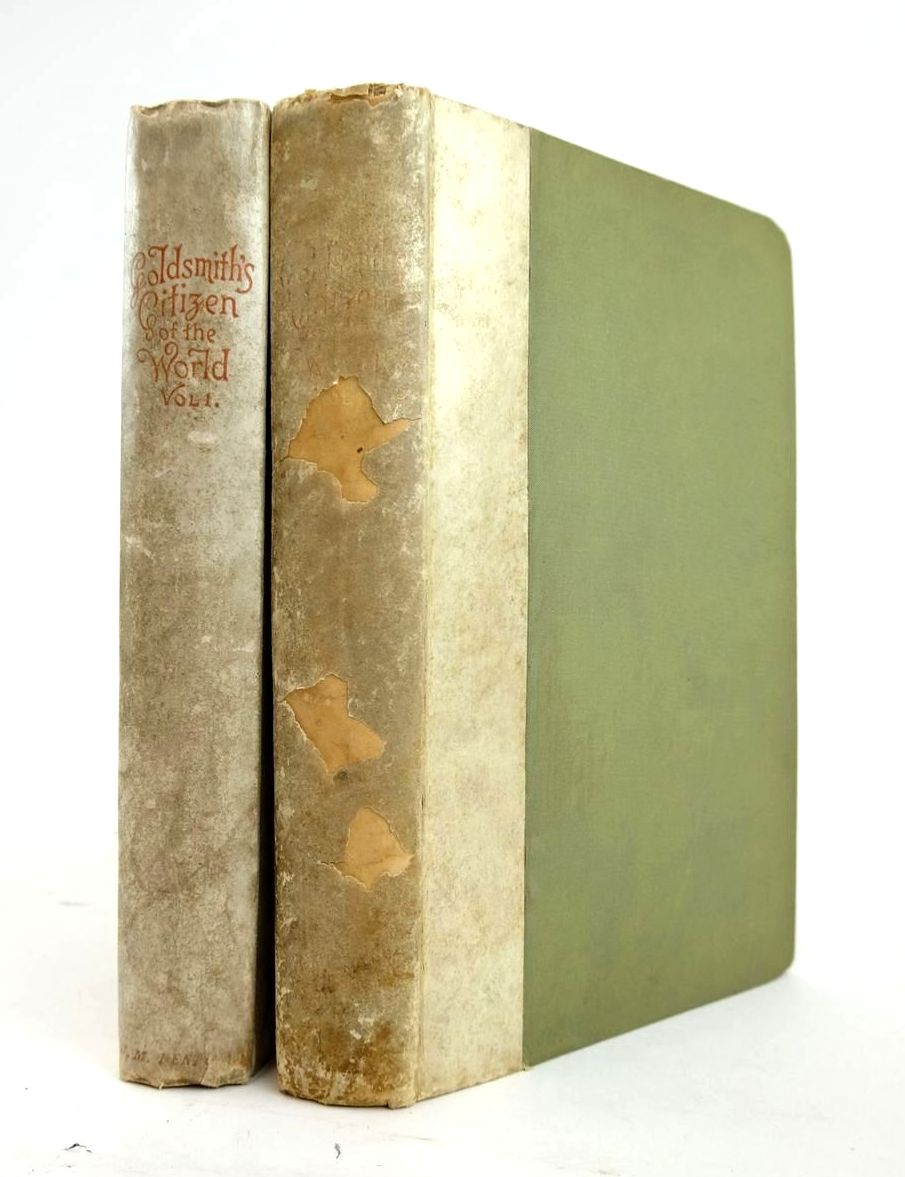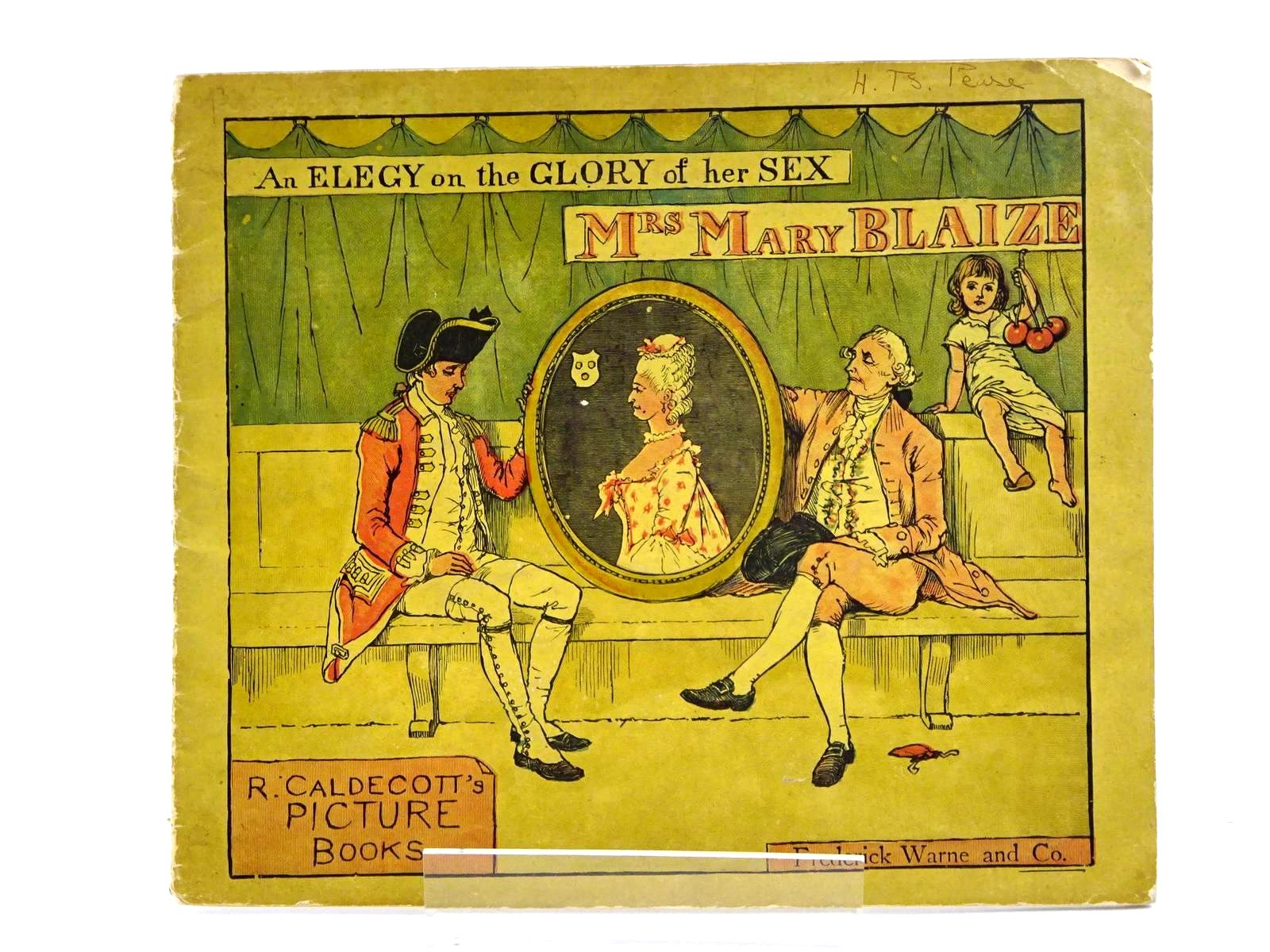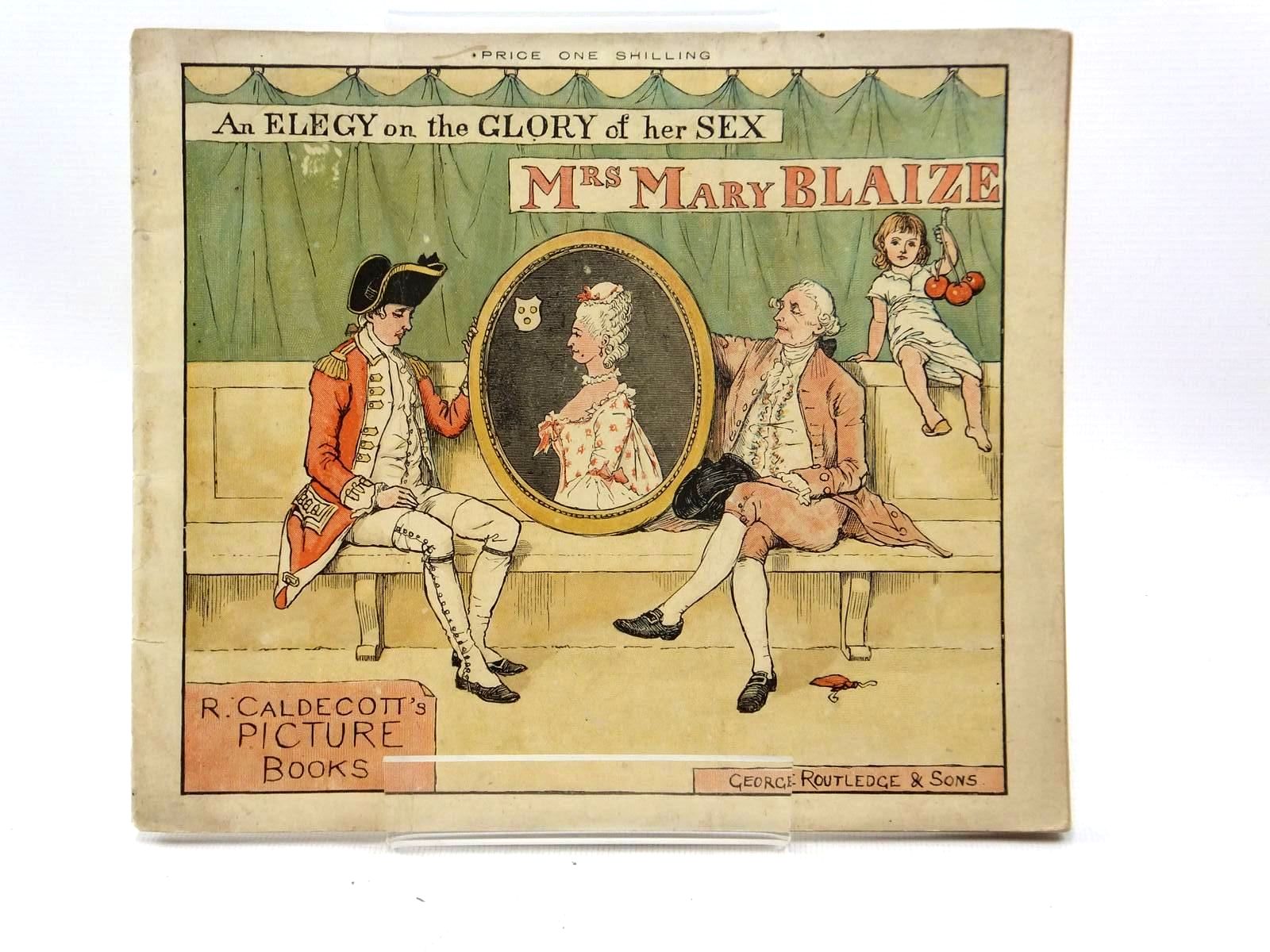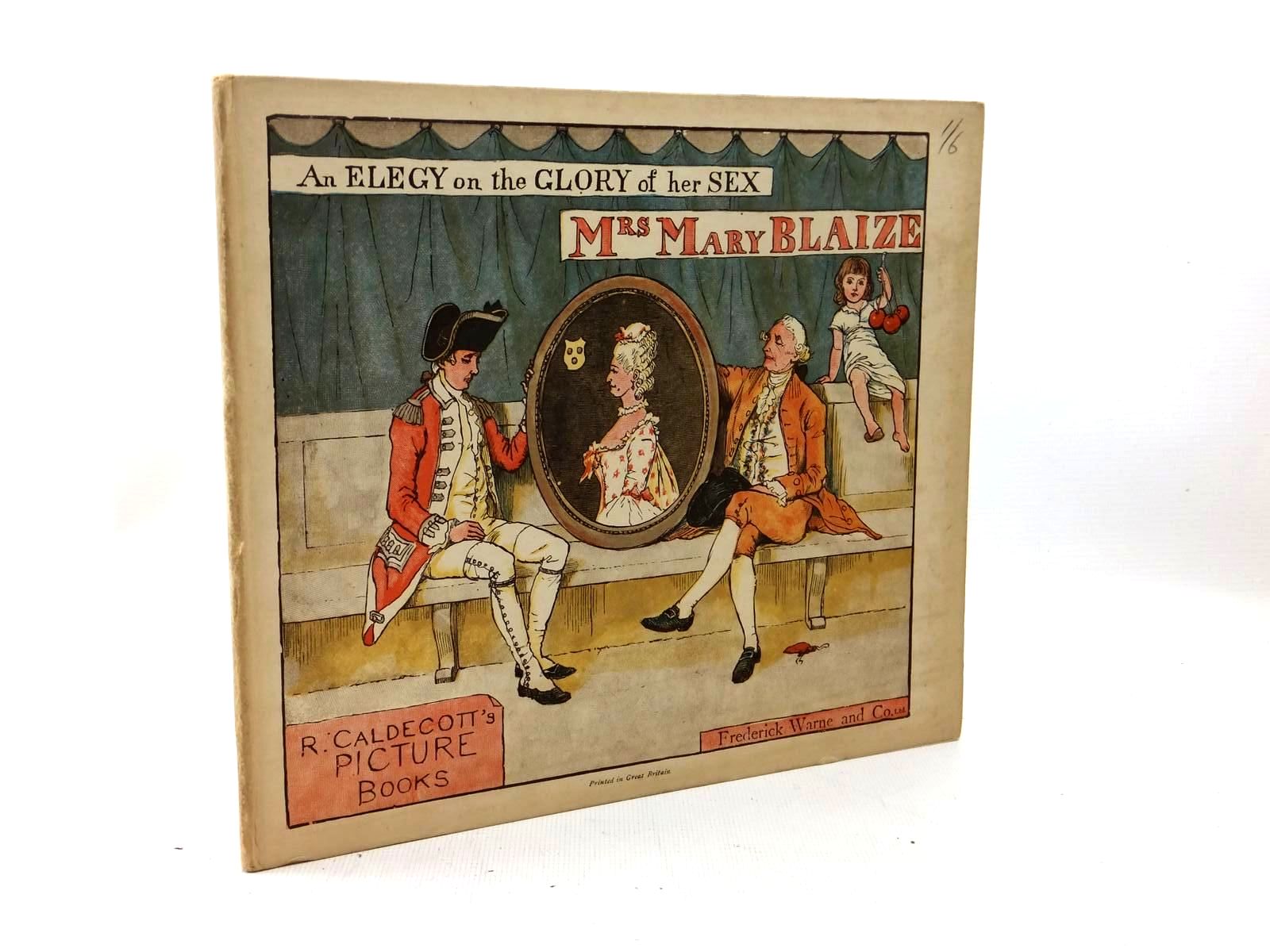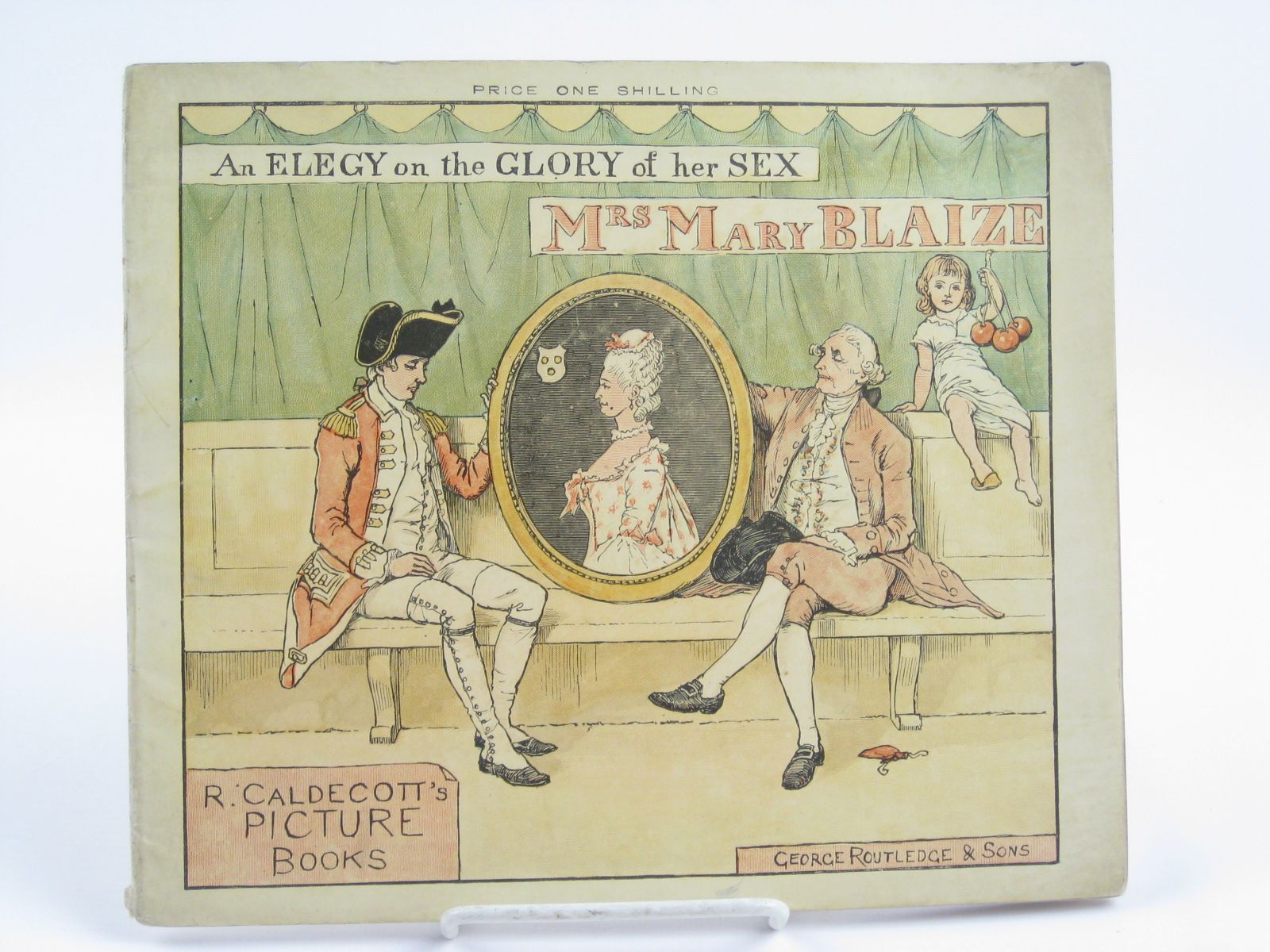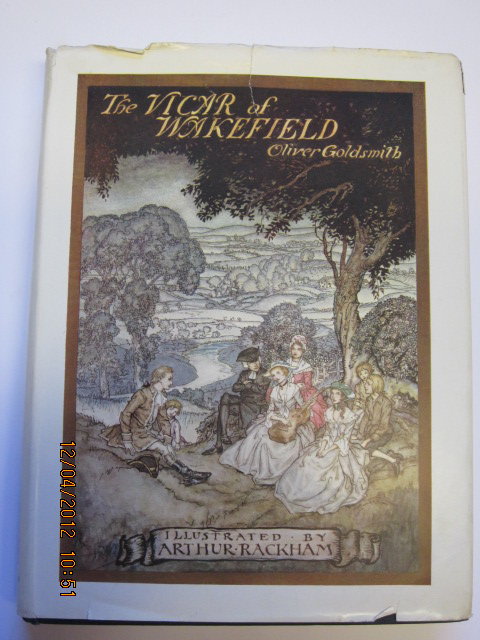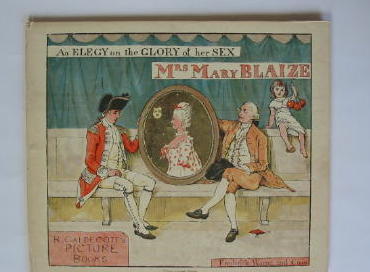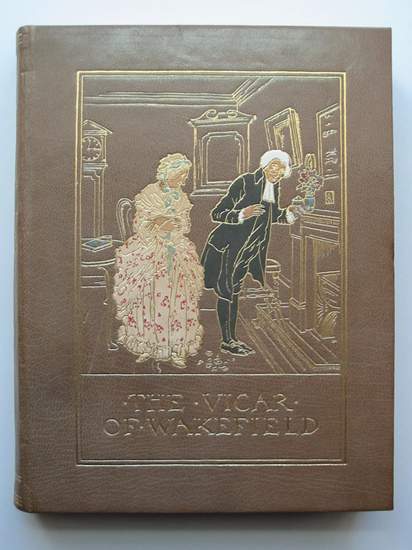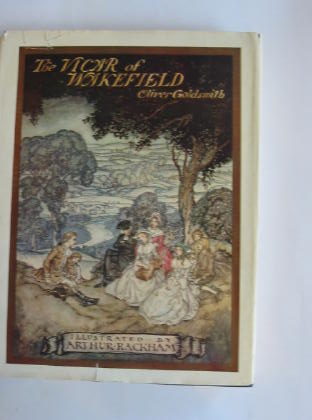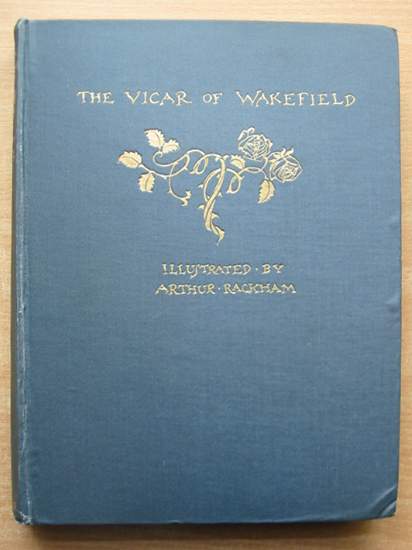The Vicar of Wakefield by Oliver Goldsmith
 View current stock of this tile
View current stock of this tile
Published in 1766, The Vicar of Wakefield by Irish author Oliver Goldsmith was one of the most popular and widely read novels during the Victorian age, and it has maintained its status as a classic to this day.
 Dr. Samuel Johnson, a friend of Goldsmith, provides an account of the circumstances which led to the publication of the novel at a time when the author was facing the prospect of a debtors' prison. Johnson had received a message from the author stating that he was in great distress and begging that he would come to his aid:-
Dr. Samuel Johnson, a friend of Goldsmith, provides an account of the circumstances which led to the publication of the novel at a time when the author was facing the prospect of a debtors' prison. Johnson had received a message from the author stating that he was in great distress and begging that he would come to his aid:-
“I send him a guinea, and promised to come to him directly. I accordingly went as soon as I was dressed, and found that his landlady had arrested him for his rent, at which he was in a violent passion. He told me he had a novel ready for the press, which he produced to me. I looked into it, and saw its merit; told the landlady I should soon return, and, having gone to a bookseller, sold it for sixty pounds. I brought Goldsmith the money, and he discharged his rent, not without rating his landlady in a high tone for having used him so ill.”
The Vicar of Wakefield describes the life and travails of Dr. Primrose, the titular hero, and his wife and six children. The novel is frequently compared with the Book of Job as much of the plot takes the form of a long Christian endurance test. Throughout a series of catastrophic reversals of fortune Dr. Primrose resolutely stands by Christian values, even when a certain degree of flexibility would surely have been wiser!
Despite the hero's sobriety, Goldsmith imbues the novel with some of the energy of a comedy, and the work may be seen as something of a comic fairy tale. The world of the novel moves at great pace, populated with rogues and villains, and filled with cases of disguise and mis-direction. Throughout this world wanders Dr. Primrose, buffeted by misfortune at almost every turn, and yet he maintains an optimistic belief that life will always be better:-
“No person ever had a better knack at hoping than I. The less kind I found fortune at one time, the more I expected from her at another; and being now at the bottom of her wheel, every revolution might lift, but could not depress me.” (Chapter XX).
Despite the naivety with which Dr. Primrose seems to be afflicted, he is not totally without cunning, as indicated by his amusing method of removing unwanted clutter from his house:-
“However, when anyone of our relations was found to be a person of a very bad character, a troublesome guest, or one we desired to get rid of, upon his leaving my house I ever took care to lend him a riding-coat, or a pair of boots, or sometimes a horse of small value, and I always had the satisfaction of finding he never came back to return them.”
But rather more typical is Dr. Primrose's dreadful faux pas of soliciting the views of Mr. Wilmot on his latest tract that insisted on complete monogamy, even after the death of a wife. Too late, Dr. Primrose realises that Mr. Wilmot is currently courting his fourth wife! Even worse, Dr. Primrose's eldest son is due to marry the daughter of Mr. Wilmot that very week, and when news arrives that a merchant has just absconded with the Primrose family savings, it is inevitable that the wedding is promptly cancelled!



A happy ending, however, awaits the hapless Primrose and his family, as the run of misfortune is reversed at the end of the novel, in a rather hasty and implausible manner it has to be said. The moral appears to be that one should follow Dr. Primrose's example and eventually good fortune will favour you. And yet, as Dr. Primrose ambles through life at his own pace, he cuts the figure more of a lovable buffoon than a spiritual teacher, and in his rather pompous sense of pride and rectitude there is just a hint of another lovable figure who is not quite in step with the 'real world' – Captain Mainwaring – a fact already noted by some online reviewers.
Is The Vicar of Wakefield a sentimental novel, or a satire on the values of a sentimental novel?
I'll leave you to decide!
Contributed by Tim
Selected illustrations shown here are by Arthur Rackham.
(Published on 17th Dec 2014 )


